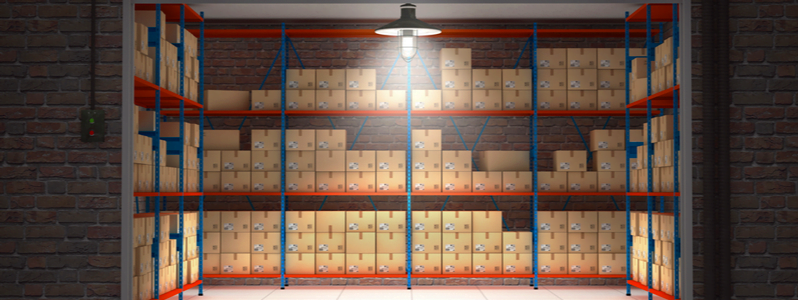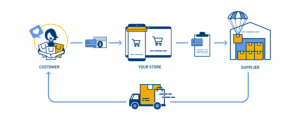When eCommerce founders are managing a warehouse, the most common question arises: “When is it at capacity?” Extensive research indicates that transportation and storage efficiency declines when a facility is between 80% and 85% of space utilisation.
Restricted pallet mobility leads to increased costs and longer processing times, prompting the need for actions to optimise warehouse space utilisation. In this comprehensive guide, we will explore 15 proven strategies to help you unlock the full potential of your warehouse and maximise efficiency.
- Start with a Comprehensive Analysis:
A thorough understanding of your current storage capacity and utilisation is crucial to optimise warehouse space utilisation. Evaluate various aspects, including rack configuration, slotting/pick philosophy, receiving, put away, replenishment, inventory management, packing, shipping, and seasonal peak trends. Conduct a comprehensive volume analysis of inbound and outbound product flow to identify areas of improvement.
- Utilise Vertical Space:
Before you take this step, it is crucial to consider structural integrity, fire safety and the specific needs of your inventory to ensure you don’t have to go back and start again. To maximise your warehouse vertically:
Consider looking upwards and utilising all available vertical space.
Explore storage media options such as pallet racking, mezzanines, or automated storage and retrieval systems (AS/RS) that allow you to maximise the clear span height.
Assess how your warehouse design impacts sprinkler layout and fire code compliance to ensure safety.
- Assess Space Requirements for Each Department:
Different departments within your warehouse may have varying space requirements. Identify functions that do not require high ceilings and allocate space accordingly. Often, there is unused overhead space in departments such as packaging and shipping that a competent warehouse manager can identify an opportunity to optimise for storage or other operations.
- Consolidate Storage Locations:
Consider combining storage locations for items that are similar or in high demand. This consolidation can be achieved as part of the putaway process or as a separate operation, reducing the overall footprint and improving efficiency.
- Right-Size Your Slots:
Matching items’ size and sales volume to the appropriately sized pick slots is crucial for maximising space utilisation. Assess the dimensions and characteristics of your inventory and allocate pick slots accordingly. Consider implementing a variety of picking slot sizes to accommodate different SKUs. The same principle applies to areas where reserve or overstock items are stored. Maintaining an optimal stock level based on sales velocity minimises excess inventory and maximises space efficiency.
- Consider Off-Site Storage for Excess Inventory:
If you have considerable excess inventory for specific items, consider utilising off-site storage facilities. This approach frees up valuable space in your primary warehouse, allowing you to optimise storage for high-demand items and improve overall efficiency.
- Explore Drop-Shipping:
Consider incorporating drop shipping to reduce in-house inventory and shipping costs. By partnering with suppliers who can directly ship products to customers, you can eliminate the need for storing and handling certain large or low-demand items.
- Optimise Aisle Widths:
Carefully assess the width of aisles in your warehouse. Strive to create the narrowest width possible to accommodate the material handling equipment used in your operations without compromising safety or operational efficiency. Optimising aisle width can create additional space for storage or other value-added activities.
- Embrace Cross-Docking:
Cross-docking is a process in which incoming products are immediately transferred to outbound vehicles without storage. Whenever feasible, implement cross-docking for large back orders or single-line orders to reduce the amount of inventory that requires storage. This can help streamline operations, improve order fulfilment speed, and optimise warehouse space utilisation.
- Maximise Building Efficiency:
Analyse the characteristics of your warehouse building to identify opportunities for maximising space utilisation. Consider stacking height, column spacing, construction barriers, and overall process flow. By aligning your space requirements with the building’s features, you can optimise storage capacity and operational efficiency.
- Consider Storage Depth:
In addition to utilising vertical space, evaluate the depth of storage. Double-depth racking, where pallets are stored two-deep instead of one, can help increase storage capacity without significantly impacting accessibility. However, it’s essential to assess the trade-offs regarding accessibility and stock rotation based on your specific inventory requirements.
- Efficiently Store Supplies:
If you need to store supplies or packing materials within your warehouse, ensure proper inventory control to minimise overstocking. Implement inventory management practices to track usage and reordering, preventing excessive storage of non-product items. Additionally, explore the possibility of partnering with your corrugated supplier to store some goods on-site, enabling frequent deliveries to maintain an optimal inventory level.
- Combine Shipping and Receiving Docks:
Consider combining your shipping and receiving docks to save space and optimise operational flow. This consolidation reduces the overall footprint dedicated to these functions, allowing for better space allocation within your warehouse.
- Utilise Mezzanines:
If your warehouse layout permits, consider installing mezzanines to house tasks that do not require high-bay storage. However, it’s vital to consider the structural integrity, fire safety regulations, and the specific needs of your inventory to ensure a successful implementation.
- Embrace Simplicity:
When faced with choices between complex and simple solutions, opt for simplicity whenever possible. Complex solutions may introduce unnecessary complications or costs. For example, instead of moving racking into small aisles, consider adding additional layers to your pallet racks to maximise vertical space. Evaluate each decision’s profitability and choose the most straightforward approach that achieves the desired optimisation outcome.
Optimising warehouse space utilisation is essential for improving operational efficiency and maximising profitability. As your company continues to evolve, contact us to discover how we can help you optimise warehouse space and drive your operations to new heights.
Was this article helpful?
Related Posts
- Good to Great: How to Take Your Business to Greater Heights
Building a 'great business' takes strategic vision & focus. We cover Jim Collin's book and…
- Budget FY2022 - What It Means for Businesses
The Federal Government released the FY2022 budget. Read on the summary of what it implies…

















